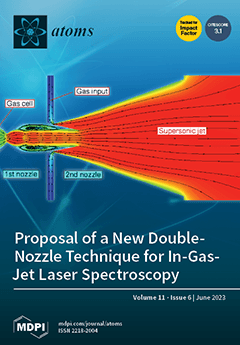Atoms, Volume 11, Issue 6 (June 2023) – 15 articles
The functionality of this new technique was explored through dynamic, detailed gas and Monte Carlo atom-trajectory simulations, and the results are presented and discussed.
These calculation results show that the new double-nozzle technique has many advantages compared with conventional techniques which are currently used for the high-resolution laser spectroscopic study of the heaviest elements. View this paper
- Issues are regarded as officially published after their release is announced to the table of contents alert mailing list.
- You may sign up for e-mail alerts to receive table of contents of newly released issues.
- PDF is the official format for papers published in both, html and pdf forms. To view the papers in pdf format, click on the "PDF Full-text" link, and use the free Adobe Reader to open them.





